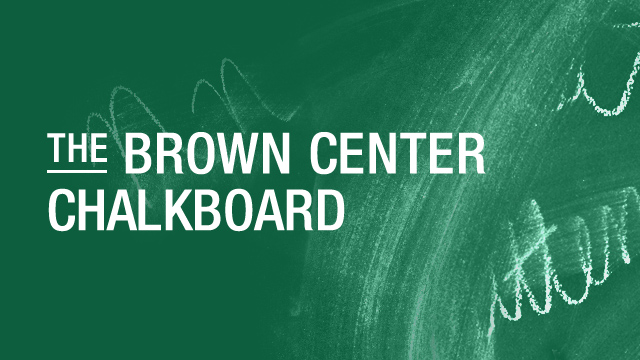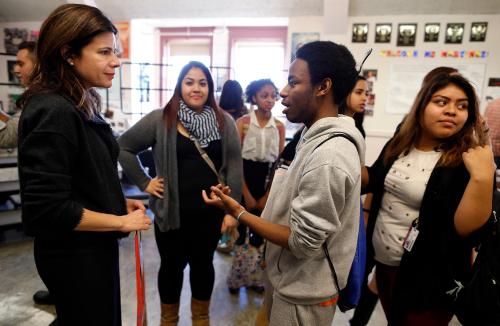As AI tools become increasingly accessible, higher education leaders are rapidly adopting strategies and practices aimed at integrating these technologies into college operations. One of the most common uses of AI in higher education is student success prediction. Prediction algorithms use data, such as students’ demographics, student ID swipes, prior academic achievements, and financial need, to project whether a student will be successful if admitted and enrolled. These tools may also help identify specific challenges faced by students, enabling the institution to intervene with additional supports. Predictions from these models can inform decisions across a range of areas—from financial aid disbursement to targeted outreach to students in need of support.
AI implementation in higher education brings critical ethical concerns, particularly regarding transparency, privacy, and fairness. One central question is whether these algorithms are biased against certain groups of students, such as racial/ethnic minorities or students from rural backgrounds. In our work, we define bias in prediction algorithms as cases where algorithms produce incorrect predictions at disproportionately higher rates for racially minoritized groups compared to others. This happens because prediction algorithms identify patterns in historical data and propagate those patterns from historical inequalities into its future predictions, reinforcing those inequities.
Research from other social sectors suggests that models used to predict outcomes reflect this type of bias. For instance, in criminal justice, predictive policing algorithms have disproportionately targeted minority communities, while in health care, predictive models have sometimes underestimated the severity of health risks for non-white patients.
In education, similar risks of perpetuating social inequities arise. If racially minoritized students in the dataset have historically been less likely to complete college, the algorithm may predict that future students from the same racial groups—or of those with other features strongly correlated with race—are also less likely to complete college, even if those features are not explicitly about race. For example, socioeconomic status, school district, or neighborhood demographics may correlate with race, and these correlations might lead to biased predictions. While our study focused on race, such biases can occur based on other social characteristics associated with college student success, such as rural background, gender, and socioeconomic status.
Our study aimed to answer two key questions: (1) To what extent are algorithms used to predict college student success racially biased? and (2) Can we effectively reduce bias using statistical techniques?
Why race? The role of race in algorithmic predictions
Our study focused on race for several reasons. First, persistent disparities in educational outcomes across racial groups combined with differences in the spread of performance within groups can lead to biased predictions. When this occurs, historical underperformance can lead the algorithm to overgeneralize from group-level trends, failing to adequately capture the variation within racially minoritized groups. This dynamic contributes to the higher error rates observed in our results.
Second, key measures commonly used in predictive algorithms are statistically associated with race. For example, research has shown that college entrance exams like the SAT and ACT are more accurate predictors of performance for white and Asian students than for Black and Hispanic students. Unless specific actions are taken to account for these group-level differences, predictive models that are trained based on these scores may confound racial disparities with predictions of student performance.
Finally, factors that could be particularly important to the success of racially minoritized students—such as campus climate or family support—are often excluded from prediction models because related data are not collected, or they are not accessible to the entities designing prediction algorithms. The exclusion of such context-specific factors can further distort predictions for minoritized groups, compromising fairness and accuracy.
Evidence of bias in student success predictions
To investigate racial bias in student success predictions, we trained several predictive models using common variables from the Educational Longitudinal Study of 2002 (ELS), a large, nationally representative dataset. Our models were trained to predict college success, defined as earning a bachelor’s degree within eight years of high school graduation for students who ever attended a four-year university. Our predictive variables included features commonly associated with student success, including students’ social characteristics (e.g., native language, family composition, and parental education), academic performance indicators (e.g., standardized test scores, first-year GPA, and college credits earned), and high school–level variables (e.g., urbanicity and whether the school was public or private).
When we compared the model predictions to actual outcomes, distinct patterns emerged across racial groups. First, Black and Hispanic students were more likely to be incorrectly predicted to fail when they actually graduated (known as false negatives). As shown in the figure (left panel), Black and Hispanic students were falsely predicted to fail 20% and 21% of the time, respectively, compared to 12% for white students and 6% for Asian students.
Meanwhile, white and Asian students were more likely to be incorrectly predicted to succeed (known as false positives). Among “failing” students who did not attain a bachelor’s degree within eight years, the predicted probability of success varied significantly by racial group (see right panel). Estimates of success were overly optimistic for white and Asian students (61% and 68% estimated probability of success, respectively). Conversely, the model estimates only a 32% probability of success for Hispanic students and 39% for Black students in similar circumstances.
Mitigating bias: Pre-processing vs. in-processing techniques
The results underscore the need for fairness-aware predictive modeling to address algorithmic bias in college student success predictions. To that end, we evaluated four different bias-mitigation strategies, categorized into two main approaches: pre-processing and in-processing. Pre-processing involves modifying the data before it is fed into the model to reduce inherent biases, such as reweighting the importance of underrepresented groups or altering feature distributions to achieve parity across groups. In contrast, in-processing incorporates fairness constraints directly into the training process.
Our findings revealed that while no single technique fully eliminates disparities, in-processing methods—those that adjust the model during training — tend to perform better than those that manipulate the data beforehand. For example, the baseline model inaccurately predicted failure for 21% of Hispanic students who actually succeeded. By applying in-processing techniques, this error rate was reduced to approximately 2%, demonstrating a significant improvement. However, the effectiveness of each method varied depending on the racial or ethnic group in question and the fairness criteria applied. These findings highlight the need for tailored approaches, as the most effective bias-mitigation strategy may depend on the specific context, data, and target population as well as institutional goals.
Broader implications
As colleges and universities strive to better serve students through data-informed strategies, it is critical to design predictive models with an awareness of their potential social consequences. Models that ignore racial bias risk penalizing groups that have long faced educational disadvantages, such as those related to school segregation, teacher bias, and disparities in school funding. Recognizing these historical systemic patterns and incorporating fairness measures are crucial to reducing bias in model outcomes and promoting equitable student support.
Biases can have different implications depending on the use case. In admissions, for instance, biased models could unjustly limit access for racially minoritized students by predicting lower chances of success. When used to recommend courses or majors, they could fuel educational tracking along racial lines, limiting opportunities for students of color in advanced courses. However, when applied to identify students for support interventions, these models could lead to inefficient spending by sending resources to minoritized students who are inaccurately predicted to fail, while overlooking the needs of white and Asian students who may actually be more at risk of failure.
In our paper, we offer a set of recommendations to support the fair use of predictive analytics to enhance college student success. Among our recommendations are the following:
- Enhance transparency and interpretability by providing stakeholders with clear explanations of factors influencing model outcomes—like course availability, campus climate, or financial aid—to improve understanding and trust. Models like FairMARS, a free tool known for its interpretability, help users better grasp predictions. FairMARS also performs exceptionally well in optimizing both accuracy and fairness.
- Cultivate critical engagement with predictive tools by providing professional development (PD) opportunities that include information about biases in data and models and how to use predictive analytics as one of several tools in student decision-making rather than as a sole guide. That PD should also include raising racial awareness to ensure faculty interpret model outputs in ways that address structural challenges (e.g., inadequate course offerings) instead of reinforcing deficit views (e.g., students’ innate abilities).
- Monitor fairness and accuracy in prediction models to help address shifts in model performance over time and with new data. Ideally, institutions would have full access to model algorithms to conduct audits and make necessary adjustments. Our freely available tool, FairPilot, supports this by allowing institutions to evaluate fairness and accuracy trade-offs, empowering decision-makers to align model configurations with their specific fairness goals. For models managed by external vendors, institutions might work with these providers to receive regular updates on model performance.
- Incorporate a variety of fairness metrics to gain a more comprehensive view of disparities. Because optimizing one fairness metric can affect another, we recently introduced a framework that guides metric selection based on model purpose and ethical priorities.
Conclusion
As colleges and universities integrate AI into their strategies for supporting student success, it is essential to balance the potential benefits of these technologies with a commitment to fairness, transparency, and ethical responsibility. Predictive models, when designed and monitored thoughtfully, could help identify students who may benefit from additional support and institutional barriers to student success.
However, without careful attention to the historical biases that may shape data and algorithms, these tools can inadvertently reinforce educational inequities, such as by denying admission to qualified students or steering them into less rigorous courses or majors based on their social characteristics. Our findings underscore the importance of developing AI systems that are responsive to the needs of all students.
The Brookings Institution is committed to quality, independence, and impact.
We are supported by a diverse array of funders. In line with our values and policies, each Brookings publication represents the sole views of its author(s).








